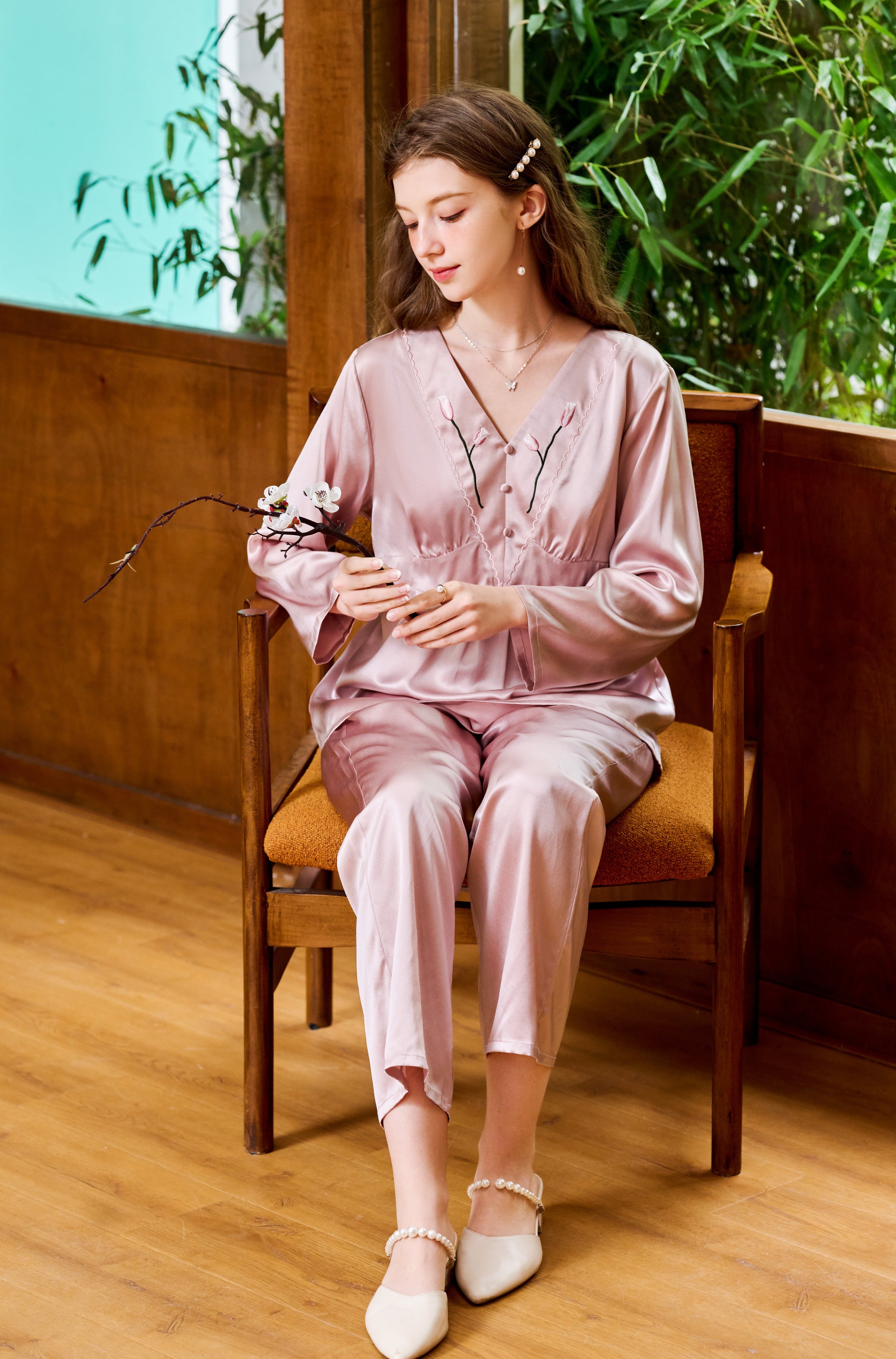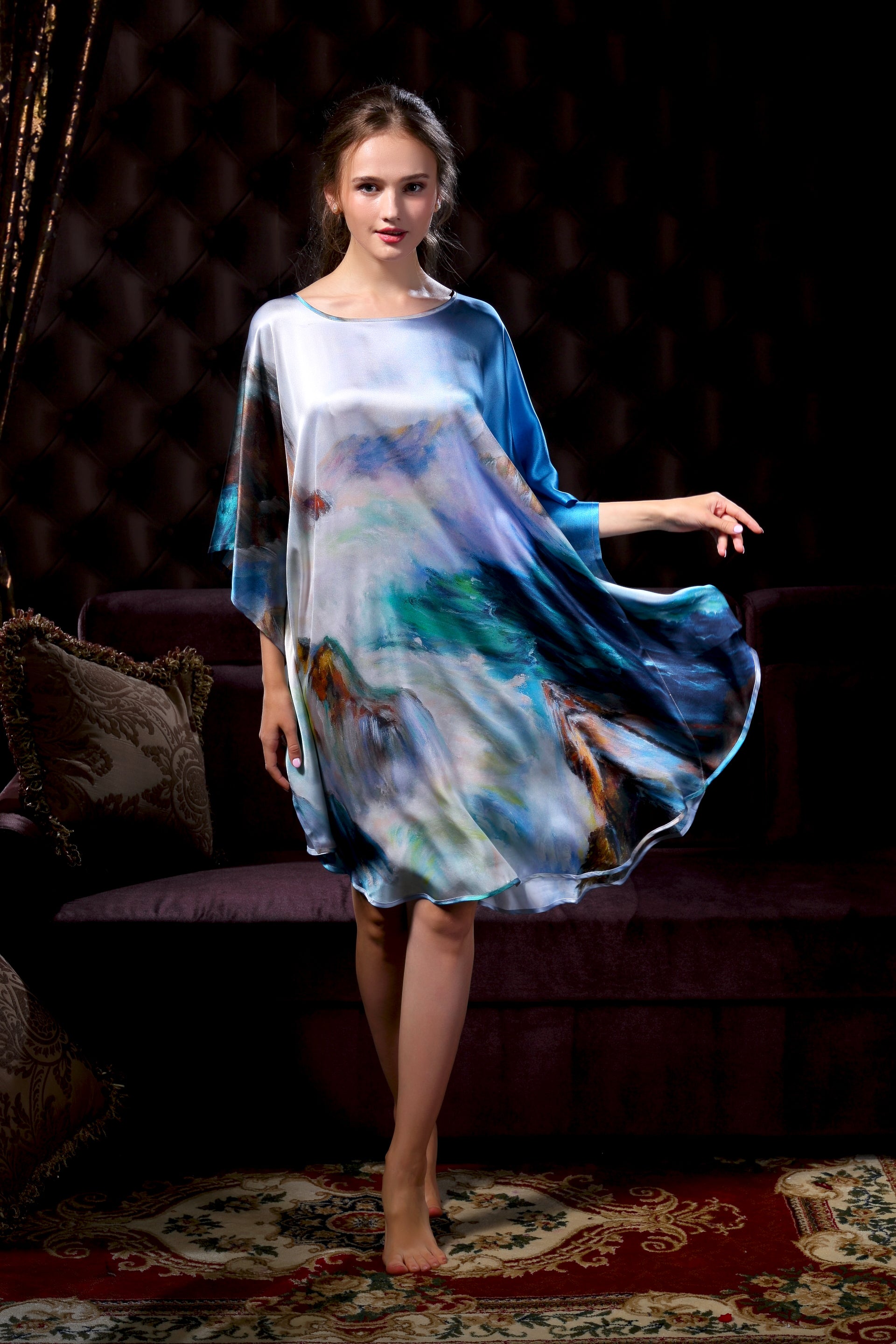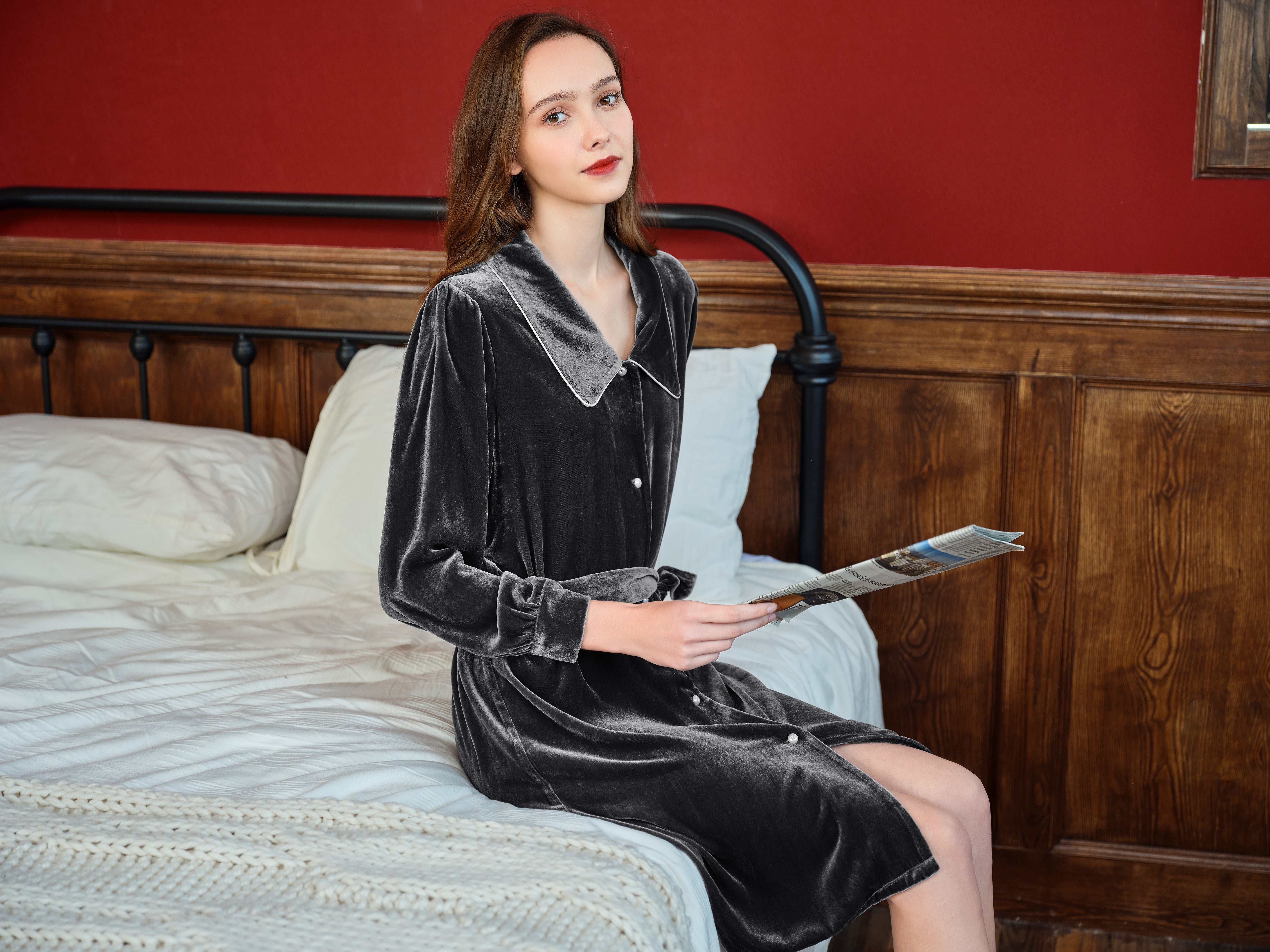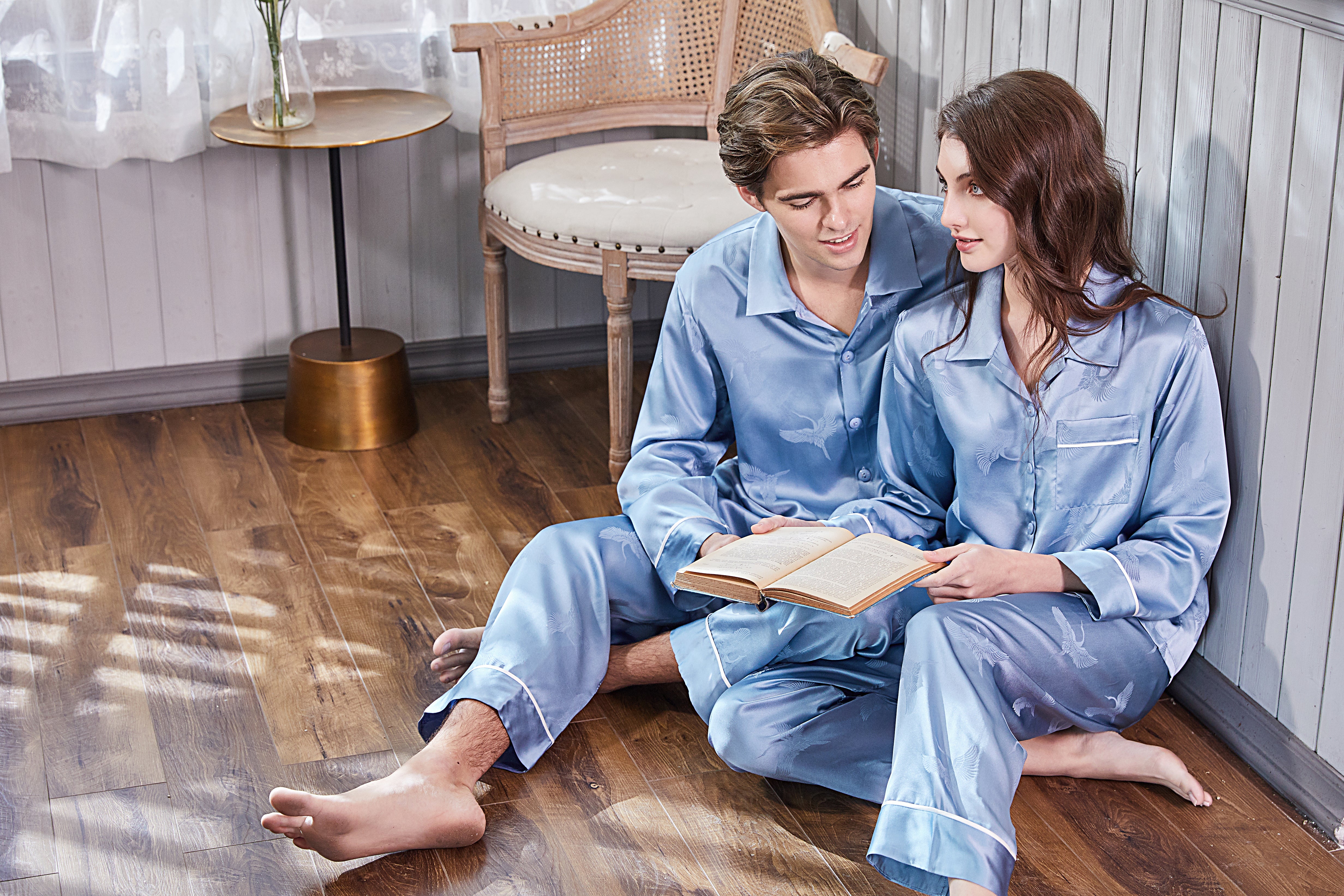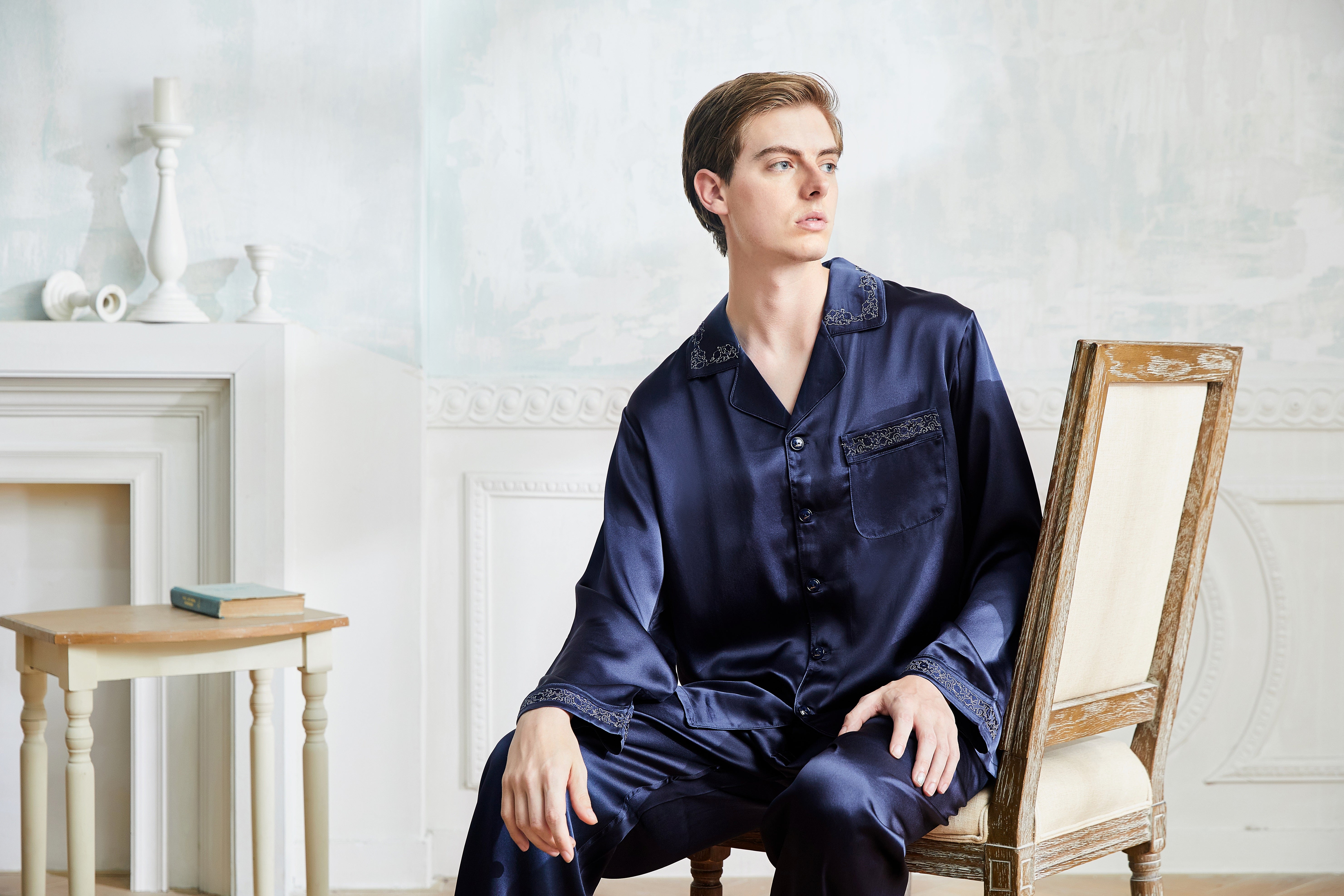The Silk Fabric We Used on Our Products
Silk generally refers to sericulture silk, including mulberry silk, tussah silk, castor silk, cassava silk, etc. Silk is known as the "Queen of Fibers" and has been favored by people throughout history for its unique charm. Silk is a protein fiber, and sericin contains 18 kinds of amino acids beneficial to the human body, which can help the skin maintain the metabolism of the surface lipid film, thus keeping the skin moist and smooth. The best component is mulberry silk, which is known as the "second skin of the human body."
Fabric Characteristics
1. Silk is composed of sericin and fibroin, made up of 18 kinds of amino acids in different proportions and spatial combinations, forming a protein fiber. Sericin is on the outside, fibroin on the inside, and they are closely connected. Sericin has a loose structure and a rough feel, so it needs to be degummed. Fibroin has a tight structure, soft and lustrous gloss, with a pearl-like radiance.
2.The feel is soft, smooth, thick, and full, with excellent elasticity.
3. Silk is a porous fiber, so it has good insulation, moisture absorption, moisture dispersion, and breathability, providing certain protection for the skin.
4. Silk is delicate and requires careful maintenance to avoid damage from heavy friction, twisting, or dragging on rough surfaces, which can damage the protein fibers.
Silk originated in China, and it is said that during the era of the Yellow Emperor over four thousand years ago, people began "teaching the people to raise silkworms and make clothes";
In 138 BC, Zhang Qian made his first mission to the Western Regions, and in 119 BC, he made his second mission, bringing the splendid silk of the East to the West. This westward route became known worldwide as the "Silk Road" because of the silk.
Fabric Classification
The common types of silk fabrics we use now are mainly:
1. Plain crepe satin: A regular silk fabric with a bright satin surface that is very noble, with a smooth feel and dense organization. This fabric has a relatively large shrinkage rate, and its luster decreases after washing. [Representative products 010014 010019 belong to 16 momme, 020027+020213 belong to 19 momme which is denser than 16. 020366+020365 heavy silk belongs to 22 momme, with a more exquisite density and better wrinkle resistance.]
2. Mulberry wave satin: A regular silk fabric with clear satin texture, antique, and very noble [Representative products 020284+020283 have hidden floral patterns, jacquard].
3.Elastic plain crepe satin: A new fabric, composed of 90%-95% mulberry silk and 5%-10% spandex, belonging to interwoven fabric. Its characteristics are good elasticity, comfort, relatively small shrinkage rate, and unique style. [Representative products: 020075 slim pants+020172]
4.Georgette: There are thin and transparent georgette and rotten flower georgette, as well as thick and glutinous heavy georgette. The advantage of georgette is its ethereal lightness; the advantage of heavy georgette is its stiffness, strong resilience, and good drape. [Representative products: 020308 gray-purple+020437 mint green, features: light and airy, easy to dry after washing]
5.Double crepe: Set at high temperatures, with good wrinkle resistance. The fabric has a stable structure, high saturation in printing and dyeing, and bright colors. The advantage of heavy crepe is that the fabric has better drape and stronger wrinkle resistance [Silk 020211 white, with a good sense of drape]
6.Knitted silk: The fabric has elasticity, good stretchability, no sense of restraint, and good air permeability [Representative products 030001+underwear, etc.]
Silk Functions
Silk is an ecologically non-polluting natural fiber. It has unique properties and vigorous vitality that other fibers and processed products cannot replace.
Comfort
Silk is composed of protein fibers, which have excellent biological compatibility with the human body, and its smooth surface has the lowest friction coefficient among all fibers, only 7.4%. Therefore, when our delicate skin encounters the smooth and fine silk, it gently and safely cares for every inch of our skin with its unique soft texture, following the curves of the body.
Moisture Absorption and Release
Silk protein fibers are rich in hydrophilic groups such as amine (-CHNH) and amino (-NH2) groups, and due to their porosity, they easily allow water molecules to diffuse. Therefore, it can absorb or emit moisture in the air and maintain a certain level of moisture. At normal temperatures, it can help the skin retain a certain amount of moisture, preventing the skin from becoming too dry; when worn in summer, it can quickly disperse the sweat and heat emitted by the human body, making one feel exceptionally cool.
